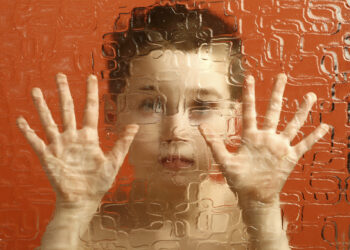Slipped Capital Femoral Epiphysis
What is Slipped Capital Femoral Epiphysis?
Slipped capital femoral epiphysis (SCFE) also known as slipped upper femoral epiphysis (SUFE), is the most common hip disorder in adolescents. The causes are not yet well understood but most of the time it occurs during the pubertal growth spurt.
SCFE affects the hip joint. This is a ball and socket joint in which the ball is the top of the long thighbone (femur) and the socket is located at the side of the pelvis (the acetabulum). The epiphysis is another name for the end of a bone, which in this case is the top/head of the femur, the shaft is also known as the metaphysis. Between the epiphysis and metaphysis of a long bone is a growth plate (physis) which is responsible for its lengthening. By adulthood the growth plate hardens, however in a growing child it is made of soft cartilage. In SCFE the growth plate is weak or under excess pressure, and the head of the femur slips off the rest of the bone in a backwards direction. The slip can vary in severity, in some children it may only be a few millimetres, but in others it can be much more severe. SCFE can cause pain in the hip, knee, or thigh; and if left untreated, complications in adulthood.
Symptoms
Pain from SCFE is usually felt in the hip, but can also occur in the knee, the front of the thigh, or the groin. The pain usually gets worse with activity/exercise and may cause a child to limp.
When the doctor examines a child with SCFE they may also notice limitations in some of the movements of the hip, particularly abduction (taking the leg out to the side) and medial rotation (rotating the leg so that the knee faces inwards). In more severe cases, the affected leg may be 1-2cm shorter than the other side.
Sometimes these symptoms onset suddenly after a fall or other minor trauma; but more commonly SCFE develops slowly, gradually worsening over several months.
What is the likelihood of Slipped Capital Femoral Epiphysis?
Although the causes of SCFE are not yet fully understood, there are some risk factors. These include:
- Growth Spurt: SCFE occurs almost exclusively during puberty, this may be because the plate is less stable when it is very active. In boys this most commonly occurs between the ages of 12 and 16, and in girls between the ages of 10 and 14.
- Gender: SCFE is more common in boys than girls
- Obesity: the majority of children with SCFE have a high body mass index
- Family History of SCFE
- Endocrine disorders e.g. hyperthyroidism or hypogonadism
Diagnosis
When a doctor suspects a child has SUFE, they will first take a history. This will include discussion of the symptoms, and some more general information about the child’s medical history and health. They will then examine the hip, looking particularly for pain and a reduced range of movement, and also observe the child walking.
X-Rays are then used to confirm a diagnosis of SCFE. They allow the doctor to visualise the slip and estimate its severity. The unaffected hip is also X-rayed, as in up to 30% of cases SCFE occurs on both sides.
If an endocrine disorder is the suspected cause blood tests may also be required, however this is uncommon.
Treatment
Treatment for SCFE is always surgical, and the choice of operation depends on the severity of slip. Once a diagnosis is confirmed, the child must not weight-bear on the affected side until surgery has been performed.
For mild to moderate slips, the treatment is usually a percutaneous in situ fixation. In this procedure a small incision is made allowing a screw to be placed through the growth plate. This stabilises it and keeps the head of the femur in the correct position.
For more severe cases, open hip surgery is required. The hip is manipulated back into a normal position and then pinned in place with one or two screws.
In some cases, the other hip may also be pinned prophylactically to avoid a second surgery and further rehabilitation later.
What are the Risks of Untreated Slipped Capital Femoral Epiphysis?
The most common complication of SCFE is slippage on the other side, occurring in up to 30% of cases.
There is also a risk of avascular necrosis, which occurs due to damage to the blood vessels that supply the femoral head with oxygen and nutrients. Without a blood supply the bone collapses and dies, changing the shape of the femoral head. This can lead to osteoarthritis of the hip, which may require reconstructive surgery.
There is also a risk of a rare but serious complication called chondrolysis, in which the cartilage of the hip joint breaks down rapidly. This can lead to deformity, pain, and reduced movement, and requires anti-inflammatory medications and physiotherapy treatment.



